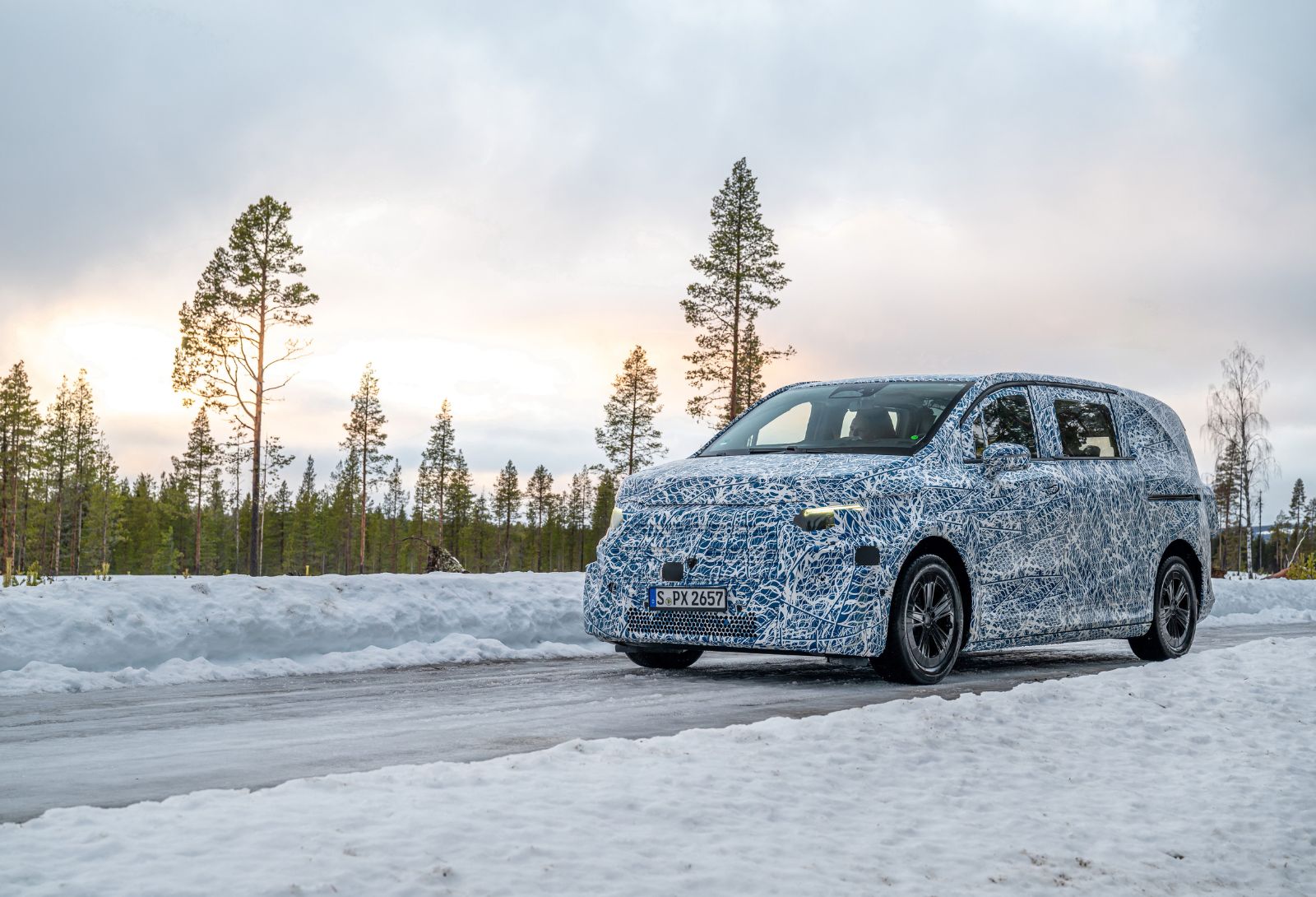
Mercedes-Benz has revealed precious few details publicly about its forthcoming vans project. The company has made it clear that this generation of vans will be unlike any other, entering a new segment and redefining luxury for the brand.
Mercedes-Benz has also divulged that its new Van Electric Architecture (VAN.EA) will underpin a fresh generation of personal and commercial battery-electric vehicles. Some will also be available with combustion engines with VAN.CA structure underneath.
While the models will share 70 percent of the same parts, a new breed of van-based limousine looks to differentiate itself not just from the commercial and personal V-Class models of the past, but also from the Rolls-Royces of the world.
On a test drive of the platform in Arjeplog, Sweden, Mercedes-Benz Vans engineers showed off their work to date. Though its exterior was disguised by camouflage and the interior bare bones, the drive experience was indicative of what customers can expect from the vehicle, albeit very early in the research and development testing phase with much equipment and system honing still ahead.
Jumping behind the wheel, it was immediately noticeable that the front seats of the test vehicle were from the forthcoming model even though they were not the most premium the company will offer. Already they are worlds ahead of what comes in other vans out of the factory, offering more than adequate comfort and stability during the very dynamic but short drive.
Mercedes-Benz
The model’s SUV-like seating position gave little pause, serving only as a reminder that in this new limousine, drivers aren’t bus drivers, but chauffeurs, unlike the feeling one gets from the current V-Class/Sprinter behind-the-wheel experience.
Boasting a host of the most modern Mercedes technologies on the dashboard, the new version of V is already set to impress and blow the competition out of the water. But it is the technology that is unseen that is the most impressive.
The VAN.EA platform features many of the same engineering characteristics of the battery-electric G-Wagen and forthcoming all-electric Mercedes-Benz GLC.
The electric motors of the new limousine provide ample power with smooth delivery. The G forces that would normally be passed on to passengers are modulated for comfort. Even a quick movement away from a stop sign on slippery ice and snow feels smooth and competent in equal parts.
The drive characteristics are obvious evolutions of the learnings of current Mercedes models, especially the battery-electric G-Wagen. The new limousine has a tight turning radius that makes it capable of a full turn within a 12-meter-wide (slightly more than 39 feet) circle with room to spare. The average traffic lane in the U.S. is 3.7 meters (about 12 feet) wide.
At higher speeds around a slippery circle, it’s notably difficult to break the back wheels loose without purposeful maneuvering. Slowing to a hard stop from high speed is a non-event, and so is starting from a stop on a 15-degree uphill slope, even with one set of the wheels on a buffed sheet of thick ice designed to make it slip.
Steady confidence is a honed characteristic the company strives for in all its vehicles, marked by very little pull on the wheel from one side or the other while stopping.
That confidence is matched with the comforts of the interior. Though the model tested at the proving grounds was equipped with last-generation V-Class seats most noted for their utilitarian style and distinct lack of bolstering, passengers were held in place with ease during the dynamic drive, with little roll around turns, even at higher speeds.
This is down to the characteristics of the platform, which is eras ahead of where anything from the Rolls-Royce or Bentley portfolios is at the moment, and in the near future.

Mercedes-Benz
Where Rolls-Royce usually wins over the competition is with its quiet, calm ride and effortless acceleration, no matter if in the gasoline-powered Phantom or battery-electric Spectre. This new limo matches it, and bests it on nearly every level, even before the sound-insulating materials and traditional appointments are loaded into it.
Adding those in will reveal a private lounge experience that is likely to make many reconsider their Cadillac Escalade, Lincoln Navigator or Chevrolet Suburban as their mode of transportation to award shows and beyond.
Mercedes-Benz will first reveal its Vision V concept, alluding to a production model, this spring. The new era of Mercedes limousine is expected to formally commence in 2026.
